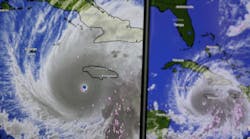Developer Cited for Clean Water Act Violations in St. Charles County, Mo.
EPA Region 7 has reached a settlement with developer Johnson-Yust Investment Co., LLC for numerous violations of federal storm water regulations at its 90-acre mixed development in St. Charles County, Mo. The settlement requires Johnson-Yust to pay a $33,000 penalty.
EPA found that Johnson-Yust violated the Clean Water Act by failing to implement sediment control and stabilization measures at its Mason Glen construction site, which are required by its storm water permit.
These violations resulted in sediment runoff from the construction site into Peruque Creek and Dardenne Creek, tributaries to Lake St. Louis. These water bodies are listed as “impaired” by the Missouri Department of Natural Resources for one or more storm water-related pollutants.
Stabilization measures, such as silt fences, were not implemented on the cleared portion of the site where trees and other vegetation had been removed. As a result, sediment runoff accumulated to depths of more than a foot in some areas downstream of the construction site, and significant erosion and gullies developed.
EPA’s enforcement actions to bring this developer into compliance with the Clean Water Act are estimated to prevent hundreds of pounds of sediment from washing into neighboring streams, rivers and lakes.
EPA issued a compliance order to Johnson-Yust in March 2006, requiring the developer to correct all violations found during EPA’s January 2006 inspection and come into compliance with its storm water permit. Johnson-Yust complied with that order. This settlement represents the monetary penalty for these violations.
Johnson-Yust has built homes in St. Charles County for several decades. The developer has been cited by the Missouri Department of Natural Resources for storm water violations at other construction sites.
Urban storm water runoff from construction sites is a significant environmental concern, and siltation is one of the worst pollution problems in our nation’s water bodies. Construction activity greatly increases erosion and runoff, which can choke nearby streams and lakes with sediment.
Sediment-laden runoff destroys spawning beds, suffocates fish eggs and bottom-dwelling organisms, decreases oxygen levels in streams, and blocks sunlight that is essential for the growth of beneficial water grasses.
In addition to sediment, storm water runoff can carry high levels of pollutants such as oil and grease, suspended solids, nutrients and heavy metals. Polluted storm water runoff is the second leading cause of impairment to the large number of surveyed rivers and streams in the nation that do not meet water quality standards.
Regulations that require construction sites to prevent water pollution have existed since 1991. While improvements have been seen in recent years, widespread noncompliance persists among the construction industry.
During the past year, EPA Region 7 has sent a team of inspectors to the largest, fastest-growing metropolitan areas in Region 7’s four-state area (Iowa, Kansas, Missouri and Nebraska).
Enforcement actions such as this one are part of a national effort by EPA to reduce the damage to water bodies caused by erosion at construction sites. EPA takes these actions to achieve greater compliance with the Clean Water Act, improve water quality, and send a clear message to the construction industry about the importance of controlling storm water runoff.
Source: EPA


